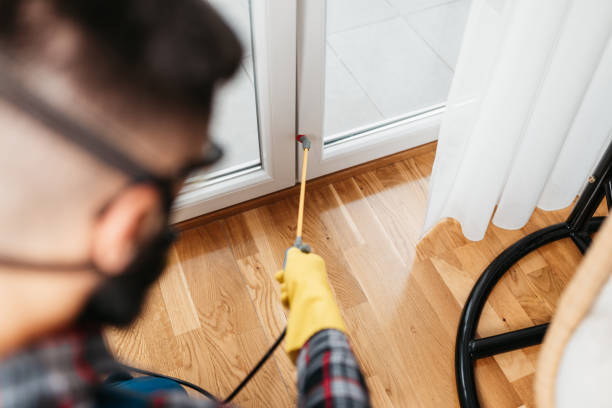Ants, spiders, termites, and rodents don’t need invitations. They’ll barge through your home as if they own it, and before you realize it, they’ve already established a foothold. These pets will exploit every weakness they can find, turning tiny cracks into highways.
Understanding where these invaders sneak inside homes can help homeowners take action before infestations take root.
Below, we’ll uncover seven pest entry points that pests target and how you can fortify them.

1. Gaps Around Doors and Windows
Doors and windows seem secure until you spot daylight creeping through their edges. Gaps as thin as a credit card grant pests easy access. Installing weather stripping, repairing damaged screens, and adding high-quality seals block drafts and deny entry. For older homes with warped frames, adjustable thresholds eliminate gaps pests exploit.
2. Cracks in Foundations
Foundations develop hairline cracks over time. This is because the soil eventually shifts, or the freezing winter temperatures. In some cases, it’s just what happens when buildings age. These tiny openings might not seem like much, but they eventually attract ants, spiders, and rodents. These all bring additional risks, making it important to patch these gaps with epoxy or polyurethane fame or concrete patches for larger gaps.
3. Utility Line Penetrations
Pipes, electrical lines, and HVAC ducts entering homes often have gaps around their entry points. Rats and mice use utility lines as highways, squeezing through openings near plumbing or wiring. Cockroaches and silverfish thrive in damp areas around pipes.
Wrapping wires in insulating tape can reduce condensation, deterring moisture-loving pests. Of course, the best pest exclusion method is still to seal the gaps with pest-resistant materials, like expanding foam or copper mesh, which rodents can’t chew.
4. Attic Vents and Soffits
Attic vents regulate airflow but lack proper screening, allowing pests inside. Installing corrosion-resistant mesh screens and enforcing soffits with chew-proof materials can address these critical entry points.
5. Garage Doors
Garage doors rarely seal tightly against driveways, leaving gaps that invite spiders, cockroaches, and rodents. Clutter near walls (boxes, tools) provides hiding spots, while pet food or garbage bags attract pests.
Threshold seals designed for garage doors eliminate gaps. For severe infestations, perimeter treatments like spider misting systems create repellent barriers.
6. Roof Damage and Chimneys
Missing shingles, damaged flashing, or rotting wood create entry points. This is why you frequently check roofs for loose shingles or rot. You should also install chimney caps with mesh screens to keep animals out, replacing damaged wood with pest-resistant materials like cedar or pressure-treated lumber for added protection.
7. Crawl Space Vents
Crawl space vents without covers allow rodents and their damp conditions attract termites, ants, and mosquitoes. Covering them with fine mesh screens works well. It’s also recommended ot install French drains and sump pumps to direct water away from the foundations to keep them dry.
Why Spring Makes These Entry Points Riskier
Spring brings forth life. Unfortunately, that also includes pests. The mild weather means that pests can breed fast. This is the time when ants will forage for food and perhaps even expand their territories.
Don’t forget that pests are opportunists. They exploit weaknesses we overlook. By understanding their favorite entry points and acting proactively, homeowners can turn their properties into fortresses.
So, come this spring season, don’t just make it a point to do some cleaning. Shield your home from pests with these pest-proofing tips.





